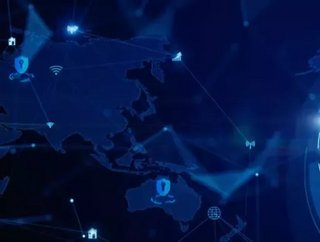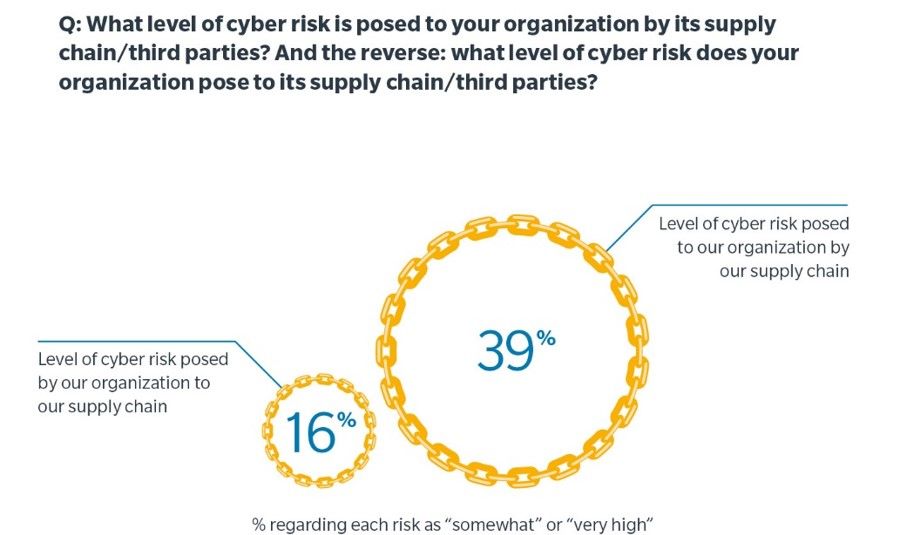Biden’s Supply Chain Intentions Depend on Cybersecurity

In recent years, the United States’ supply chain network has faced an onslaught of cyberattacks. The attacks have left the global superpower a shaking nation with a whole portfolio of challenges, risks, and vulnerabilities exposed to the masses. From the SolarWinds attack to the dependency confusion attack that breached companies like Apple, Microsoft, Uber, and Tesla, to the most recent US pipeline ransomware hit, it’s evident that, in an increasingly digital age, cybercriminals fear no traditional governmental powers, and supply chain networks need to hunker down on cybersecurity.
Looking back at the height of the COVID-19 pandemic, western nations found themselves ill-equipped to deal with the novel Coronavirus; not due to lack of knowledge or medical inability but because supply chains were in a chokehold and supplies like personal protective equipment (PPE) for frontline workers weren’t being manufactured fast enough.
To address this problem and mitigate future risks, Biden signed Executive Order 14017, aptly titled “America’s Supply Chains”, in February 2021.
The Executive Order (EO) called for a comprehensive review of US supply chains to figure out exactly where the vulnerabilities and risks are, to help institutions and organisations manage any future disruption caused by COVID-like events.
The EO focuses on six primary sectors:
- Agriculture
- Communications and information technology
- Defence industrial base (DIB)
- Energy and power
- Public health
- Transportation
The listed sectors, as you might expect, are increasingly dependent on digital products and services to maintain daily operations, which increases their vulnerability to potential attacks ─ so they need cybersecurity. In fact, cybersecurity should be front-and-centre as a critical facet of the EO if the federal government truly intends to create a more robust and resilient supply chain in the face of rising criminal adversity.
Digitisation Dangers The Nation
When it comes to a globally interconnected supply chain, the ambitions of Biden’s administration are potentially a little far-fetched and off-the-mark, in reality. I say that because an overwhelming number of industry-leading organisations ─ even in the tech realm ─ still do not feel confident in their ability to deal with the vulnerabilities in their supply chain. Most of which come not from internal operations but from externals ones in the form of third parties and suppliers that they collaborate with.
According to the dated but increasingly relevant Marsh Microsoft 2019 Global Cyber Risk Perception Survey introduction, “cyber risk has moved beyond data breaches and privacy concerns to sophisticated schemes that can disrupt entire businesses, industries, supply chains, and nations, costing the economy billions of dollars and affecting companies in every sector. The hard truth organisations must face is that cyber risk can be mitigated, managed, and recovered from, but it cannot be eliminated.”
Taking a look at the survey results reveals a telling tale: that third-party providers and supply chain operations external to an organisation are most likely to be the victim of cyberattacks and potential infiltration.
The survey found a wide discrepancy in many organisations’ view of the cyber risk faced by supply chain partners, compared to the level of perceived risk they themselves pose:

This variance is consistent across industry sectors and geographic regions, and the largest organisations exhibited the largest dissonance: 61% of companies with revenues of US$5bn or more suggested that their supply chain partners pose a risk, whereas only 19% say they themselves pose a risk to the third-parties involved:

Low Confidence in 3rd-Party Risk Mitigation Capabilities
The above paints a pretty poor picture of the overall supply chain security ─ a disconnect between large organisations and their suppliers, which could be driven by companies’ low confidence in their ability to mitigate cyber risks posed by their commercial partners. The number of companies that considered themselves “highly confident” in that area is few and far between, with only 5-15% of respondents feeling prepared to deal with the cyber risks caused by certain types of third-party providers.

So due to the very obvious lack of knowledge, it’s clear that supply chain professionals and organisations, as well as the Biden administration, should call upon their cybersecurity industry peers ─ white hat professionals ─ to take the fight to black hat cybercriminals.
How Cybersecurity Professionals Can Help
According to Padraic O’Reilly, CPO and Co-Founder of CyberSaint, the success of Biden’s Executive Order is heavily dependent on its stakeholders taking note of lessons from cybersecurity’s supply chain risk management initiatives, including:
- Identifying the main weaknesses along the chain of production before determining which ones can be fixed cost-effectively. Then, compare that with the cost of the potential impact ─ discover where the holes are and what’s worth prioritising.
- Thinking about the supply chain as a cybersecurity practitioner does. Cyber-risk is all about making sense of multiple data sources, and supply chain risk is the same. Don’t think about the supply chain as a single entity; rather, consider it as many entities that produce data ripe for deep risk analysis.
- Standardisation across the globally interconnected supply chain is hard, and communication is key. Cyber experts are hot on the topic, as managing risk is exactly what they do. Vulnerabilities and risk is the language that they speak in. They’ve been dealing with supply chain security for years before disruptions at the scale of COVID-19 came about.
Cross-sector collaboration with a strong focus on communication across hierarchical levels is at the very core of the cybersecurity function. If Biden hopes to see his supply chain initiative reign triumphant, his administration must ensure that efforts are coordinated across agencies, public entities, and the private sector industry. The administration must also carefully consider the potential impact of increased regulation that should be put in place following the year-long project ─ it could make or break the initiative across various sectors.
According to O’Reilly:
“The best choice is to rely on standards, measurement, and cross-industry collaboration to make this happen. Other supply chain standards, such as the Cybersecurity Maturity Model Certification (CMMC), can serve as models for a data-driven approach.
Without these considerations, we risk a lot of duplicative time, effort, and analysis, only to fail to mitigate cyber-risks and possibly result in yet another supply chain attack. We hope stakeholders will engage the information security community to bolster this project. Leveraging existing analysis by the information security community will matter to its success.”
Adapting To The Unknown
The fact of the matter is, when it comes to the US supply chain, we mostly haven’t got a clue. It’s a massively interconnected network that represents an ecosystem ─ one with risks coming from all angles and multiple points of failure. It’d be almost impossible to figure out all of the potential risks, as Biden’s initiative intends, so, according to O’Reilly, it’d be beneficial to focus not on sniffing out every single supply chain vulnerability but on advanced persistent threat (APT) incentives:
- What are the low-hanging targets?
- What do criminals want?
- What are they capable of?
“Doing some scenario modelling and talking in probabilities could lead to more informed decisions regarding mitigating risk. NIST 800-30 and the FAIR model are examples of risk-quantification methods that aim to translate cybersecurity risk into dollars and cents. Understanding supply chain risk requires measurement, strong governance, input from security experts, information sharing, and advances in cyber and IT risk-management software. Instead of logging an APT's activity, start getting a fact pattern about where they may be going”, O’Reilly adds.
So the final point to the Biden administration and organisations that are working on Executive Order 14017 is clear: cybersecurity professionals have an advantage over their peers because they already live to standardise data; they view risk through a lense of complexity and costliness of failure, and if the two parties can collaborate effectively, there’s a chance that security professionals can finally understand the full extent of the supply chain ecosystem and, with any luck, secure it from future attacks.
- Supply Chain Problems Sees Partnerships Programme GrowOperations
- SAP: Procurement Leaders 'Must act on Rising Cyber Threats'Digital Supply Chain
- Firms 'turning to regional suppliers and manufacturers'Supply Chain Risk Management
- Supply chain tech roundup: Avery Denison, Cargill, OlamTechnology






